How to Grow and Care for Bamboo: Master the Art of Healthy, Vibrant Plants
- May 27, 2024
- 0 comment
Learn how to grow and care for bamboo with our guide to achieving healthy, vibrant plants. Enhance your garden’s appeal effortlessly. Dive into the art of bamboo gardening—a rewarding endeavor that adds beauty and serenity to any outdoor space. This guide is tailored for anyone eager to learn how to grow and care for bamboo effectively.

From selecting the ideal variety to mastering the nuances of its upkeep, we’ll cover everything you need to transform your garden with these elegant, towering plants. Ready to grow your own vibrant, healthy bamboo? Let’s get started.
Table of Contents on How to Grow and Care for Bamboo
- Understanding Bamboo: The Basics
- Choosing the Right Bamboo Type
- Essential Tools and Supplies
- Planting Your Bamboo
- Watering and Nutritional Needs
- Sunlight and Location
- Pruning and Maintenance
- Pest and Disease Management
- Winter Care for Bamboo
- Propagating Bamboo
- Troubleshooting Common Problems
- Conclusion
- FAQs
Understanding Bamboo: The Basics
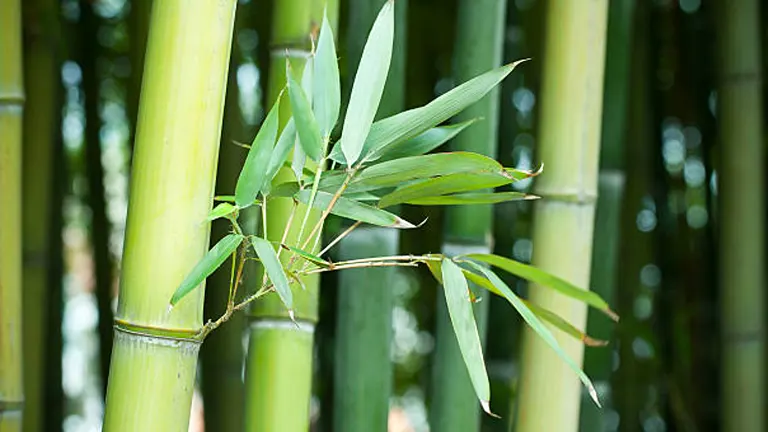
Bamboo is not only prized for its elegant appearance but also for its exceptional growth rate and functional versatility. As a member of the Poaceae family, bamboo is technically a perennial grass, yet it stands out due to its woody, tree-like structure.
Growth Patterns
Bamboo exhibits unique growth characteristics that distinguish it from typical tree species. It develops from an underground rhizome system that enables rapid height acquisition within a single growing season, often reaching its full height in just a few months. This growth is facilitated by the plant’s ability to produce a large amount of biomass very quickly. For example, the Guadua bamboo can grow up to 30 inches (about 76 cm) in 24 hours under optimal conditions.
Bamboo is broadly categorized into two types based on its rhizome patterns:
- Clumping (sympodial): These varieties grow in tight clusters, expanding slowly and are easier to control.
- Running (monopodial): These spread aggressively via long rhizomes, often requiring management strategies to control their spread in garden settings.
Ecological Impact
Bamboo’s environmental benefits are profound. It is an excellent carbon sink, with some species capable of sequestering up to 400 kilograms of carbon per cubic meter of growth. This makes it an effective tool in climate change mitigation strategies. Moreover, bamboo’s extensive root system helps in stabilizing soil and preventing erosion, promoting soil health in degraded areas.
| Characteristic | Detail |
|---|---|
| Growth Rate | Up to 30 inches/day (Guadua species under optimal conditions) |
| Carbon Sequestration | Up to 400 kg/m³ |
| Root System Impact | Reduces soil erosion, improves soil quality |
| Lifecycle | Perennial, with culms living up to 15 years |
| Use in Reforestation | Highly effective due to rapid growth and biomass production |
Additional Scientific Insights
Bamboo also plays a crucial role in water management within ecosystems. It can transpire a large volume of water, contributing to local humidity and precipitation patterns, which can be particularly beneficial in arid regions. Studies show that a mature grove of bamboo can release up to 200 gallons (approximately 757 liters) of water into the atmosphere each day.
Furthermore, the silica content in bamboo leaves contributes to the plant’s resilience and is often used in traditional medicines and as a natural reinforcement material in construction.
Choosing the Right Bamboo Type
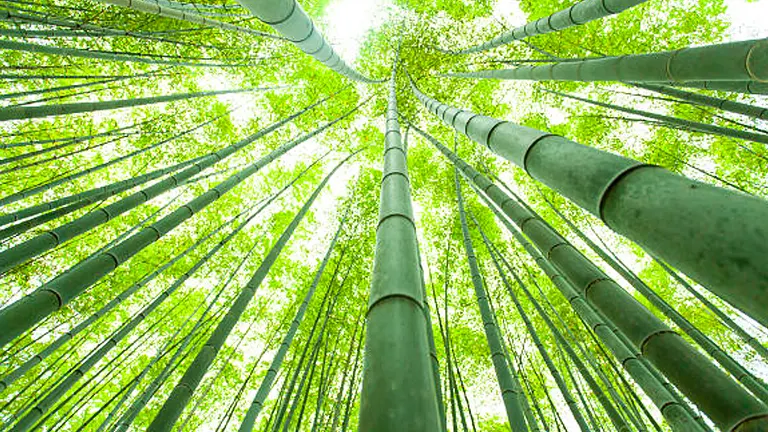
Selecting the appropriate bamboo species is fundamental to ensuring successful growth and maintenance. Bamboo types are primarily categorized into two groups: clumping and running, each with distinct growth patterns and management needs.
Clumping Versus Running Bamboo
- Clumping Bamboo: These bamboos grow in tight clusters, making upward growth more predominant than horizontal spreading. This growth habit makes them ideal for urban gardens or limited spaces where uncontrolled spread is a concern. Species like Bambusa and Fargesia are popular clumping types known for their hardiness and upright structure.
- Running Bamboo: Known for their rhizomatous root system, these bamboos spread aggressively and can cover large areas quickly, which is ideal for creating privacy screens or extensive landscape features. However, without proper containment measures like rhizome barriers, they can become invasive. Species like Phyllostachys are commonly seen in warmer climates.
Climate Considerations
The resilience of bamboo to different climates is influenced by its species. Clumping bamboos are generally more adaptable to cooler temperatures, making them suitable for a wider range of climates, including temperate zones. Running bamboos thrive in warm, temperate to tropical climates, demanding more heat and direct sunlight to prosper.
Soil and Sunlight Requirements
- Soil Type: Bamboo prefers well-draining soil rich in organic matter. The pH should ideally be mildly acidic to neutral. Amending the soil with compost or well-rotted manure can enhance growth.
- Sunlight: Most bamboo species require at least six hours of direct sunlight daily. However, some clumping varieties can tolerate partial shade, which is beneficial in cooler climates with less intense sunlight.
Clumping vs. Running Bamboo Characteristics
| Characteristic | Clumping Bamboo | Running Bamboo |
|---|---|---|
| Growth Pattern | Vertical growth, tight clusters | Horizontal spreading, aggressive growth |
| Space Suitability | Ideal for small gardens and contained areas | Best for large spaces or where quick coverage is needed |
| Climate Adaptability | Tolerates colder temperatures, versatile across zones | Prefers warmer conditions, limited cold tolerance |
| Management | Lower maintenance due to limited spread | Requires containment strategies like root barriers |
| Soil Preference | Well-draining, organic-rich, mildly acidic to neutral | Similar requirements, but often more water-demanding |
| Sunlight Exposure | Can tolerate partial shade | Requires full sun for optimal growth |
Essential Tools and Supplies
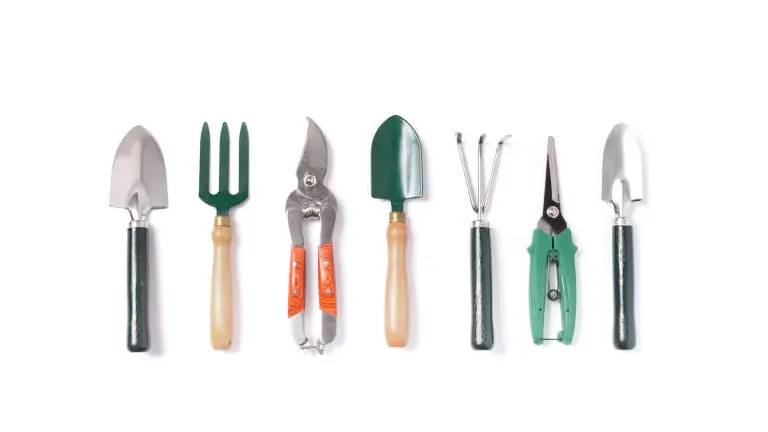
Cultivating bamboo requires a set of specific tools and supplies tailored to its unique needs. Here’s a comprehensive guide to the essential equipment and materials that will facilitate the healthy growth and maintenance of your bamboo garden.
Tools for Planting and Maintenance
- Spade and Garden Fork: These tools are indispensable for initially preparing the planting area. A sturdy spade is perfect for digging planting holes, while a garden fork can help break up compacted soil, ensuring it is aerated and ready for planting.
- Pruning Shears and Saw: Bamboo, particularly the running types, requires regular pruning to manage growth and remove any dead or unwanted culms. A sharp pair of pruning shears is ideal for thinning smaller clumps, whereas a robust saw may be necessary for cutting thicker, mature stalks.
Organic Gardening Supplies
- Organic Fertilizers: Nitrogen-rich organic fertilizers are vital for bamboo’s lush growth. Options such as blood meal, fish emulsion, or a specially formulated bamboo fertilizer can provide the high nitrogen content needed.
- Soil Amendments: Biochar and compost are excellent for enhancing soil structure and fertility. Biochar, in particular, not only improves soil aeration and water retention but also helps in sequestering carbon in the soil, which is beneficial for the environment.
Additional Supplies
- Rhizome Barrier: For running bamboo varieties, a rhizome barrier is crucial to prevent invasive spread. These barriers are usually made of thick, durable plastic and should be installed at least 30 inches deep around the planting area.
- Mulch: Mulching around the base of your bamboo can help retain moisture, suppress weeds, and keep the root system cool. Organic mulches like straw or bark chips are recommended as they gradually break down and enrich the soil.
Watering Tools
- Soaker Hose or Drip Irrigation System: Bamboo thrives with consistent moisture, especially during the growing season. A soaker hose or a drip irrigation system can deliver water directly to the root zone, ensuring efficient use of water and promoting healthy growth.
Planting Your Bamboo
Soil Preparation and Enhancement
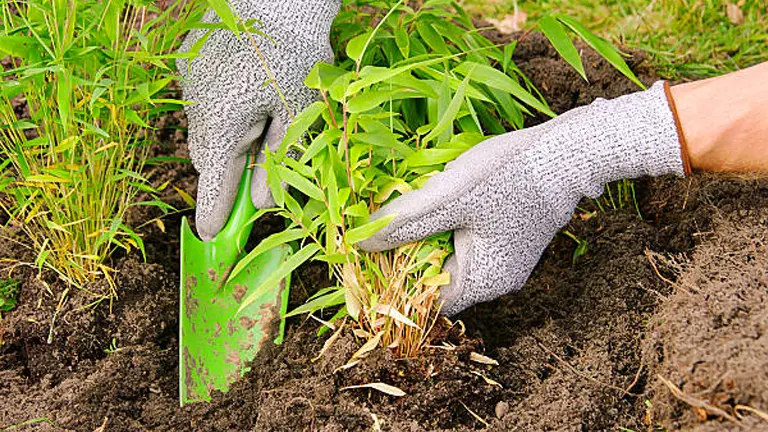
Before introducing bamboo to your garden, it is critical to optimize the soil environment to promote healthy growth. Bamboo thrives best in loamy soil that ranges from slightly acidic to neutral in pH (typically 5.5 to 7.0). To prepare the soil:
- Nutrient Enrichment: Incorporate a well-balanced mix of organic compost into the existing soil. This step is crucial as it improves soil structure, enhances drainage, and provides essential nutrients. Compost rich in decomposed plant materials, such as leaves and bark, is most beneficial because it mimics the natural forest floor that bamboo thrives on.
- Soil Testing and Adjustment: Conduct a soil test to determine the pH level and adjust accordingly using sulfur to lower the pH or lime to raise it, ensuring the soil environment is within the ideal range for bamboo growth.
Planting Depth and Spacing Strategy
Proper planting depth and spacing are vital for ensuring the bamboo’s survival and spread.
- Depth Guidelines: Dig a hole approximately twice as wide as the root ball and as deep as the root ball’s height. This depth is critical as it allows the roots ample space to establish without being too deep, which could cause waterlogging and root rot.
- Spacing Considerations:
- For clumping bamboo varieties, which grow more compactly, space the plants 3 to 5 feet apart.
- For running bamboo varieties, known for their aggressive spread, a spacing of 5 to 10 feet is advisable. Alternatively, install root barriers at a depth of 2 feet and extending above the soil surface to prevent unwanted spreading.
Securing and Establishing the Plant
Carefully place the bamboo in the prepared hole and backfill with a mix of native soil and organic compost. Firm the soil around the plant to eliminate air pockets, which can affect root growth. Initial watering should be thorough to help establish the plant and mitigate transplant shock. This step also helps in compacting the soil mixture and ensuring contact between roots and soil, which is essential for the transfer of nutrients and water.
Post-Planting Care
Immediately after planting, it is essential to maintain a consistent watering schedule to establish the plant. For the first few weeks, keep the soil consistently moist but not waterlogged. Mulching around the base of the bamboo can help retain soil moisture and regulate soil temperature.
Essential Bamboo Planting Specifications
| Aspect | Detail for Clumping Varieties | Detail for Running Varieties | Purpose and Benefits |
|---|---|---|---|
| Soil pH | 5.5 – 7.0 | 5.5 – 7.0 | Optimal range for nutrient uptake |
| Planting Depth | Root ball height | Root ball height | Ensures adequate root establishment |
| Spacing | 3 – 5 feet | 5 – 10 feet | Prevents overcrowding; manages spread |
| Nutrient Enrichment | High organic content | High organic content | Enhances growth and root development |
| Watering After Planting | Thorough saturation | Thorough saturation | Reduces transplant shock; establishes roots |
| Mulching | 2-3 inches | 2-3 inches | Maintains moisture; controls soil temp |
Watering and Nutritional Needs
Optimized Watering Techniques
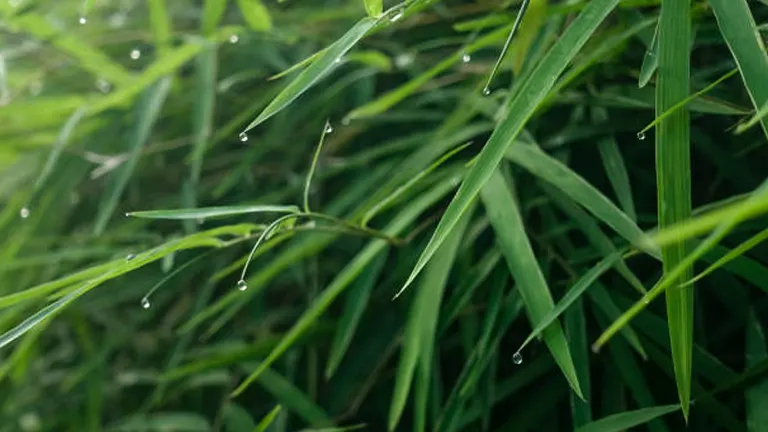
Water management is crucial for bamboo, particularly in its formative years. Here are detailed guidelines for optimal watering:
- Watering Frequency and Depth: Bamboo prefers deep watering, which encourages roots to grow downward, stabilizing the plant and increasing drought resistance. In temperate climates, water your bamboo once a week during the growing season, ensuring that the water penetrates at least 8-12 inches into the soil. In hotter, drier conditions, increase watering to twice a week.
- Soil Moisture Monitoring: Use a soil moisture meter to ensure that the soil around your bamboo maintains a consistent level of moisture. The ideal moisture level should keep the soil damp to a depth of about 12 inches, preventing both overwatering and underwatering, which can lead to stress and disease.
- Adjustments for Seasonal Variations: Reduce watering frequency during the dormant winter months, but ensure the soil does not completely dry out. This seasonal adjustment helps prevent root rot and other moisture-related issues.
Mulching for Microclimate Control
Applying and managing mulch can greatly benefit bamboo in several ways:
- Mulch Application: Spread a 2 to 3-inch layer of organic mulch, such as bark or straw, around the bamboo. Ensure the mulch does not touch the culms (bamboo stems) directly to avoid moisture retention against the stem, which can cause decay.
- Benefits of Mulching: Mulch helps maintain soil moisture, suppresses weed growth, and provides a slow release of nutrients as it decomposes. It also insulates the soil, keeping it cooler in summer and warmer in winter.
Strategic Fertilization Practices
Fertilization is essential for the vigorous growth and health of bamboo, but it must be approached carefully:
- Nutrient Requirements: Bamboo has high nitrogen demands, especially during its growth phase in the spring. Use a slow-release fertilizer with a ratio of approximately 10-5-5 (NPK: Nitrogen-Phosphorus-Potassium).
- Fertilizing Schedule: Apply fertilizer early in the spring to support new growth and again in mid-summer to sustain growth through the season. Avoid fertilizing late in the season as this can promote new growth that may not harden off before winter.
- Environmental Considerations: Use organic or controlled-release fertilizers to minimize runoff and the impact on the surrounding environment. Measure the application accurately to avoid excessive fertilization, which can lead to nutrient leaching and potential damage to the plant and soil health.
Sunlight and Location
Optimal Sunlight Conditions
Sunlight plays a pivotal role in the growth and health of bamboo, with its needs varying significantly among species.
- Sunlight Intensity and Duration: Most bamboo species thrive under full sun to partial shade conditions. They generally require at least 4-6 hours of direct sunlight daily. However, in regions with intense sunlight, such as tropical or desert climates, some species benefit from afternoon shade to prevent leaf scorch and excessive water loss.
- Species-Specific Light Requirements: It’s essential to understand the specific sunlight preferences of your chosen bamboo species. For example, Phyllostachys species typically require full sun, whereas Chimonobambusa species perform better in partial shade. Tailoring the location to these preferences is crucial for optimizing growth and foliage health.
Strategic Location Selection
The right location is not only about accommodating the bamboo’s size but also about integrating it into the landscape effectively.
- Space Considerations: When choosing a location, consider the mature height and spread of the species. Bamboo can be fast-growing and invasive, so provide ample space from structures, pathways, and property lines. Use root barriers if planting running types to control their spread.
- Aesthetic and Functional Placement: Determine the role of the bamboo in your landscape. If using it for privacy screens or hedges, east or west-facing sides are ideal to maximize density and height without overshadowing other plants. For ornamental purposes, choose a location that highlights its unique structure and foliage.
- Environmental Impact: Consider the bamboo’s ability to alter microclimates. Its dense foliage can lower ambient temperatures, making it an excellent choice for green barriers in urban settings. Additionally, its root system can help reduce soil erosion on slopes.
Pruning and Maintenance

Effective pruning and diligent maintenance are pivotal for sustaining bamboo’s structural integrity and aesthetic, while also boosting its health and growth dynamics. Here’s a refined approach to managing your bamboo’s pruning process:
Optimal Pruning Time
The ideal period for pruning bamboo is during the late winter or early spring. Targeting this timeframe ensures that you remove old or dead culms before the onset of the growing season, allowing new shoots to flourish without competition.
Scientific Pruning Techniques
- Age Selection for Removal: Bamboo culms that exceed three years typically exhibit a decline in vigor and structural integrity. It’s advisable to remove these culms at their base, employing sharp, sanitized pruning shears. This age-specific pruning is backed by growth cycle studies showing that older culms contribute less to the grove’s overall vitality.
- Thinning for Health: Thinning involves removing approximately 20-30% of total culms, focusing on the oldest or weakest to enhance light penetration and air circulation within the grove. This strategy is essential for minimizing disease and encouraging robust new growth.
- Height Control: To maintain a specific height or form, topping—cutting horizontal culms—can be strategically applied. However, it’s critical to perform this sparingly and thoughtfully to preserve the bamboo’s natural form and avoid stunting its development.
Maintenance Insights
- Regular Inspections: Monitor the bamboo regularly for any signs of stress, such as yellowing leaves or stunted growth, which may indicate overcrowding or nutritional deficiencies.
- Debris Management: Keep the area around the bamboo clear of organic debris to prevent the development of fungal diseases and deter pests. A clean environment is crucial for maintaining a healthy bamboo grove.
Advanced Maintenance Techniques
- Fertilization Strategy: Applying a balanced, slow-release fertilizer with an NPK ratio of 10-10-10 during the early growing season can significantly enhance growth by providing essential nutrients.
- Watering Regimen: Bamboo requires consistent moisture, especially in growing seasons. Implement a watering schedule that maintains soil moisture at a depth of about an inch, which supports deep root development and overall plant health.
Pest and Disease Management
Maintaining the health of bamboo involves vigilant monitoring and proactive strategies against pests and diseases. By understanding and applying scientifically-backed methods, gardeners can effectively protect their bamboo groves.
Detailed Pest Control Strategies
- Common Pests Identification:
- Bamboo Mites: These microscopic pests can cause yellowing and speckled discoloration of leaves. A magnifying glass can help in early detection.
- Aphids and Mealybugs: These insects excrete honeydew, which leads to sooty mold. They’re visible to the naked eye as small, clustered bugs on the undersides of leaves.
- Treatment Techniques:
- Physical Removal: Regularly washing plants with a strong water jet can dislodge younger insects and eggs.
- Chemical Treatments: Insecticidal soaps and neem oil applications every two weeks have shown effectiveness. These treatments work by suffocating pests or disrupting their life cycle.
Advanced Disease Management
- Common Diseases:
- Bamboo Rust (Kweilingia divina): This fungal disease presents as orange or rusty spots on leaf surfaces, hindering photosynthesis.
- Leaf Smut (Ustilaginoidea virens): Causes dark, powdery coatings on leaves, leading to decreased vigor.
- Preventative Actions:
- Optimized Planting Design: Space bamboo plants to ensure adequate airflow, which is crucial in preventing moisture accumulation that supports fungal growth.
- Moisture Control: Utilize drip irrigation instead of overhead watering to minimize wet leaves, a common cause of fungal diseases.
Integrated Pest Management (IPM)
Implementing an IPM approach involves continuous observation, identification of potential issues early on, and the integration of cultural, physical, and biological methods before resorting to chemical solutions.
Pest and Disease Impact Table
| Issue | Symptoms | Recommended Action |
|---|---|---|
| Bamboo Mites | Yellowing, leaf speckling | Insecticidal soaps, strong water spray |
| Aphids | Sooty mold, sticky leaves | Neem oil, physical removal |
| Bamboo Rust | Rusty spots on leaves | Improve air circulation, remove affected parts |
| Leaf Smut | Dark powdery deposits on leaves | Avoid wetting foliage, ensure good air flow |
Winter Care for Bamboo
Even robust bamboo plants require special attention during the colder months to ensure they thrive year-round. Implementing effective winter care strategies can protect your bamboo from damage and promote healthy growth.
- Root System Protection:
- Mulching: Apply a thick layer (6-12 inches) of organic mulch, such as straw, bark, or leaves, around the base of the bamboo. Mulch acts as an insulator, maintaining a more stable soil temperature and protecting roots from freeze-thaw cycles. Studies indicate that mulch can keep soil temperatures up to 5-10°F warmer than non-mulched soil.
- Burlap Wrapping: Wrap the culms in burlap or frost blankets. This technique helps shield the bamboo from cold winds and frost, which can desiccate and damage exposed culms.
- Scientific Insights on Insulation:
- Thermal Conductivity: Organic mulches have low thermal conductivity, reducing heat loss from the soil. Research shows that straw mulch, in particular, is effective at maintaining root zone temperatures during sub-freezing weather.
Water Management
- Adjusting Watering Practices:
- Reduced Frequency: Bamboo’s water needs diminish in winter, but it’s crucial to keep the soil moderately moist to prevent root desiccation. Watering should be light yet consistent, especially during prolonged dry spells.
- Avoiding Waterlogging: Ensure the soil is well-draining to prevent water from pooling around the roots, which can lead to rot. Use raised beds or amend soil with organic matter to improve drainage if necessary.
- Scientific Insights on Winter Watering:
- Root Physiology: Bamboo roots are less active in cold temperatures but still require moisture to maintain cellular function. Soil moisture sensors can be used to monitor and maintain optimal moisture levels without overwatering.
Winter Care Impact Table
| Winter Care Technique | Description | Scientific Basis | Expected Outcome |
|---|---|---|---|
| Mulching | Applying 6-12 inches of organic mulch | Reduces soil temperature fluctuations by 5-10°F | Prevents root freezing, maintains moisture |
| Burlap Wrapping | Wrapping culms with burlap or frost blankets | Shields from wind desiccation and frost damage | Protects above-ground parts from cold damage |
| Reduced Watering | Light, consistent watering during dry spells | Maintains root hydration without waterlogging | Prevents root desiccation, supports root health |
| Improved Drainage | Amending soil or using raised beds | Enhances water infiltration and reduces pooling | Prevents root rot, improves soil aeration |
Additional Insights for Winter Bamboo Care
- Cold-Hardy Varieties: Select bamboo species that are naturally more resistant to cold temperatures, such as Fargesia and Phyllostachys, which can tolerate temperatures as low as -20°F.
- Wind Barriers: Erecting windbreaks or planting bamboo in sheltered locations can reduce wind exposure, further protecting the plants from cold stress.
- Monitoring and Response: Regularly check the bamboo for signs of cold stress, such as yellowing or browning leaves, and adjust protective measures accordingly.
Propagating Bamboo
Expanding your bamboo collection or sharing it with others can be achieved through effective propagation techniques. Here’s a detailed guide to the most efficient methods:
Division
Division is the simplest and most reliable method for propagating bamboo, especially for clumping species. This method ensures that the new plants are clones of the parent, maintaining all their characteristics.
- Timing and Preparation:
- Season: Perform divisions in the spring when the bamboo is actively growing. This timing allows the divided sections to establish roots quickly in the warm season.
- Preparation: Select a healthy bamboo clump. Ensure your tools are sharp and clean to minimize damage and prevent disease transmission.
- Procedure:
- Digging: Carefully dig around the selected portion of the clump, ensuring to include several healthy rhizomes and culms. A sharp spade or saw may be necessary for thick rhizomes.
- Replanting: Replant the division immediately into well-prepared soil, maintaining the same depth and orientation as the original plant. Water thoroughly to settle the soil around the roots.
- Scientific Insights:
- Root-to-Shoot Ratio: Ensuring a balanced root-to-shoot ratio is critical. Research indicates that divisions with a higher proportion of roots relative to shoots establish more quickly and robustly.
Culm Cuttings
For running bamboo species, culm cuttings can be an effective propagation method. This technique allows for the propagation of bamboo without disturbing the parent plant.
- Selection and Preparation:
- Culm Selection: Choose a healthy, mature culm that is at least one year old. Younger culms have higher success rates in rooting.
- Cutting: Cut a section of the culm that includes one or two nodes. Nodes are critical as they are the points from which roots and shoots will emerge.
- Planting and Care:
- Planting Orientation: Plant the culm horizontally in a moist potting mix, ensuring that at least one node is buried while the rest of the culm remains exposed.
- Moisture and Warmth: Maintain consistent moisture and warmth. Use a humidity dome or plastic bag to create a greenhouse effect, which helps in root development. Ideal temperatures range from 70-85°F (21-29°C).
- Scientific Insights:
- Auxin Application: Applying a rooting hormone containing auxins (e.g., indole-3-butyric acid) to the cut ends can significantly enhance rooting success. Studies show that auxins promote root initiation and growth in many plant species.
Propagation Methods Table
| Method | Best For | Key Steps | Scientific Insights |
|---|---|---|---|
| Division | Clumping species | Dig up a portion with healthy rhizomes and culms | Balanced root-to-shoot ratio ensures robust growth |
| Culm Cuttings | Running species | Plant culm section with nodes in moist potting mix | Auxin application enhances root development |
Additional Insights for Bamboo Propagation
- Environmental Control: Maintain a stable environment with high humidity and warm temperatures to encourage rooting.
- Soil Preparation: Use well-draining, nutrient-rich soil to provide the best start for new bamboo plants.
- Monitoring: Regularly check for signs of growth and adjust care as needed, ensuring that the new plants receive adequate water and light.
Troubleshooting Common Problems
Even with the best care, bamboo can encounter issues. Here’s how to diagnose and resolve common problems:
Yellowing Leaves: This is often a sign of over-watering or poor drainage. Ensure the soil is well-draining and reduce watering frequency. Nutrient deficiencies, particularly nitrogen, can also cause yellowing. A balanced, slow-release fertilizer can correct this issue.
Stunted Growth: If your bamboo is not reaching its expected height or spread, check for compacted soil or inadequate nutrition. Loosen the soil around the roots and apply a nitrogen-rich fertilizer. Also, ensure the bamboo is not in too shady an area as insufficient light can limit growth.
Leaf Drop: Sudden leaf drop can be alarming, but it is often part of the bamboo’s natural cycle, especially in the fall. If leaf drop occurs at other times, it might be due to a pest problem, drought stress, or excessive cold. Address the specific conditions based on the symptoms and environmental factors.
Related Post
- How to Build a Barn: A Step-by-Step Guide for Beginners
- How to Build a Sustainable Compost Bin: Easy and Eco-Friendly DIY
- How to Fertilize Bougainvillea: A Complete Guide for Stunning Blooms
- How to Fertilize Apple Trees: Essential Tips for a Bountiful Harvest
- How to Fertilize Lemon Trees: Secrets for Thriving Citrus
- How to Fertilize Avocado Tree: A Step-by-Step Guide for Lush Growth
- 10 Best Bow Saws to Buy in 2024: Top Picks for the Money
- Best Miter Saw For Beginners
- Top 10 Pruning Saws to Buy in 2024: Best for the Money
- 7 Best Pocket Chainsaw
Conclusion
Congratulations on completing your journey through the comprehensive guide to growing and caring for bamboo. From choosing the right variety to mastering seasonal care, you now possess the knowledge to cultivate these magnificent plants. Bamboo not only offers aesthetic and practical benefits but also contributes to a greener planet.
FAQs
- What are the best conditions for planting bamboo in my garden?
Bamboo thrives in well-drained soil, with access to full or partial sunlight depending on the variety. It prefers a slightly acidic to neutral soil pH. Ensuring these conditions are met before planting will promote healthy growth. - How often should I water my newly planted bamboo?
Newly planted bamboo needs to be kept consistently moist. Water deeply once or twice a week, depending on the weather and soil type, to ensure the roots establish well. Avoid letting the soil dry out completely or become waterlogged. - Can bamboo be grown in pots, and if so, what care adjustments should I make?
Yes, bamboo can be successfully grown in pots. Choose a large container with drainage holes to accommodate the root growth. Potted bamboo may require more frequent watering and should be monitored for nutrient needs since container soil can deplete faster than garden soil. - What is the best way to prevent running bamboo from becoming invasive?
Installing root barriers at the time of planting can effectively contain running bamboo. These barriers should be at least 24 inches deep and made of a sturdy material like plastic or metal to block the spreading rhizomes. - How do I prune bamboo to manage its height and spread?
To control height, you can top the bamboo by cutting above a node at the desired height. To manage spread, regularly prune older culms and thin the clump to stimulate new growth and maintain vitality. - What are the signs of over-fertilization in bamboo, and how can I correct it?
Signs of over-fertilization include leaf burn or a rapid decline in health. To correct this, flush the soil with plenty of water to wash away excess fertilizer. Reduce future applications and ensure you are using a balanced, slow-release fertilizer. - How can I tell if my bamboo is getting too much sun?
Bamboo that receives too much sun may exhibit scorched, curling leaves or faded color. If these signs appear, consider providing some shade during the hottest part of the day, or gradually move the bamboo to a location with more suitable light exposure. - What should I do if my bamboo leaves start yellowing?
Yellowing leaves can be a symptom of many issues, including water stress (both under and over-watering), nutrient deficiencies, or disease. Check the moisture level of the soil first, adjust watering accordingly, and consider applying a balanced fertilizer. If the problem persists, examine the plant for signs of pests or disease.
With the right knowledge and a bit of care, your bamboo can thrive, bringing beauty and sustainability to your garden. Enjoy the journey of growing these remarkable plants and watch as they transform your outdoor space into a vibrant green haven. Happy gardening!

Emma Hudson
Forestry AuthorEmma's experience in farming shapes her detailed guides on gardening and farming tools, providing practical, actionable advice grounded in real-world experience. Her work targets both newcomers and experienced farmers, aiming to enhance their practices with a mix of traditional wisdom and modern techniques. By making complex agricultural concepts accessible, Emma's guides serve as valuable tools for those navigating the challenges of contemporary farming, offering strategies for sustainable success.

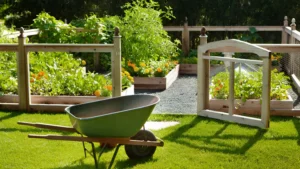
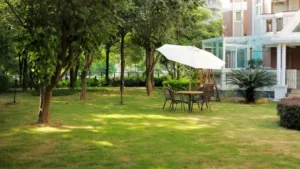
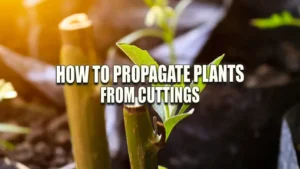


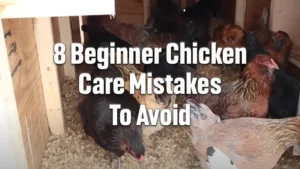





Leave your comment